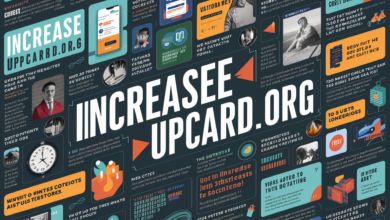Is create Australia legitimate Power in the Workplace

Power in leadership is important for any management role. Learn the definition and examples of legitimate power, as well as the advantages and disadvantages of it.
Definition of Legitimate Power
Legitimate power is the power you derive from your formal position or office held in the organization‘s hierarchy of authority. For example, the president of a corporation has certain powers because of the office he holds in the corporation. Is create Australia legitimate
Like most power, legitimate power is based upon perception and reality. It is based on the reality that a person holds a particular position in an organization.
It’s also based on the perception of an employee that someone holding that position has the authority to exert control over her.
Legitimate power as a source of authority has one distinct advantage over many other sources of authority, which is that it is usually based upon some objective rule or law of the organization
Advantages and Disadvantages of Legitimate Power
Let’s go back to the example of the president of a corporation. He derives his power from the office he holds, but it is the corporation’s bylaws that outline and limit the president’s duties, obligations, and authority along with any specific directives given to him by the board of directors. The power of the office is usually not and undefined, and the leader is regulated and controlled by organizational rules. This adds to the leader’s legitimate authority.
Legitimate power is not without a disadvantage. While legitimate power can help ensure employee compliance with a manager’s orders, it does not necessarily provide a basis for employee loyalty to either the manager or the corporation. A wise manager will seek to supplement his legitimate authority with other forms of power, such as referent power, expert power, or charismatic power,
Legitimate Power is one of the 5 Types of Power by psychologists John R. P. French and Bertram Raven in 1959.
Power in the workplace can exist in many different forms. It can exist even without a formal organizational hierarchy in place. It can also exist outside of any formal hierarchy that does exist. In this article, we’ll examine Legitimate Power.
Legitimate Power is a formal type of power in an organization. Subordinates comply because they believe in the legitimacy of their position.
With Legitimate Power it is your position that gives you your power. The higher up the organizational hierarchy you go the more power you hold.
If you lose your position your power disappears. because your subordinates were influenced only by your position and not you as an individual.
Regardless of your level in the hierarchy, you exercise this power when you tell your subordinate to perform a task.
Is create Australia legitimat
In the above diagram, the top-level leader (Level 1) has authority over all people underneath them – the entire organization. Each of the leaders at the next level (Level 2) has authority over three separate people each. Finally, those at the bottom of the organization have no power and no authority over anyone.
In the above diagram, the top-level leader (Level 1) has authority over all people underneath them – the entire organization. Each of the leaders at the next level (Level 2) has authority over three separate people each. Finally, those at the bottom of the organization have no power and no authority over anyone. Is create Australia legitimate
Legitimate Power is underpinned by rules and even laws. In the workplace, this means that failure to follow your boss’s directive can result in disciplinary action. In the case of a president, they have the legal backing of the law of the land to issue many directives. Is
Even though Legitimate Power is a formal type of power and underpinned by rules and laws, it is still built on perception. This is the perception the subordinate has that another person has the authority to exert control over them.
There are several reasons why this perception can exist, including:
- »Cultural norms: In many cultures, it is seen as normal to have one person hold authority over another through their position.
- »Reciprocity: The subordinate performs a task for their boss as long as they get something in return. This typically takes the form of receiving a paycheck. However, there are many factors in play that can make this relationship fair (see Equity Theory to learn more about this dynamic).
Legitimate Power is a power that is given to you through your position, but it doesn’t make you a good leader. To be a good leader you must also have supplemental leadership skills. For example, skills such as transformational leadership or servant leadership.
Thus, people with Legitimate Power can still be bad leaders. This situation arises all the time. Imagine you have a new boss but you don’t respect them because of their poor skills and style. If they issue an instruction you’ll do it, but only because the rules of the organization say you must. You’re not doing it because you respect or trust them in any way.
Examples of Legitimate Power
Examples of Legitimate Power in action include: A CEO sets the direction and strategy of an entire organization.When a boss sets quarterly goals for each member of his team.When airport security staff insist your baggage is scanned before you’re allowed to board your flight.Is
Advantages of Legitimate Power
A clear hierarchy enables the entire organization to understand exactly who has authority over whom.»Rules and sometimes laws exist to reinforce Legitimate Power. For example, a president will have the legal authority to instruct their military to perform a task. In a business context, a subordinate can face disciplinary action if they don’t perform the wishes of their boss.
Disadvantages of Legitimate Power
It doesn’t always result in effective organizations This can lead to dissatisfaction and frustration amongst their team.It doesn’t in any way encourage employee loyalty.
1. Make use of other tools
Legitimate Power is a great first step, but to be successful you should make use of other tools. For example, reward power and referent power can encourage your team members to strive for excellence without the need to issue precise instructions.
2. Understand your position
Remember t being promoted to a position of power is only You will need to build relationships with your team to sustain your position. Servant leadership can be an excellent tool to set you up for long-term success.
3. Learn to Let Go
Understand that losing some skills and replacing them with others is natural. For example, you may lose technical skills but replace them with leadership skills. This will make allowance for your lost skills.
Summary
Legitimate Power is one of the 5 Types of Power. It is from the position you hold within a hierarchy. With Legitimate Power, subordinates do as instructed because they believe in the legitimacy of the role you hold. It is by rules, laws, and even social




